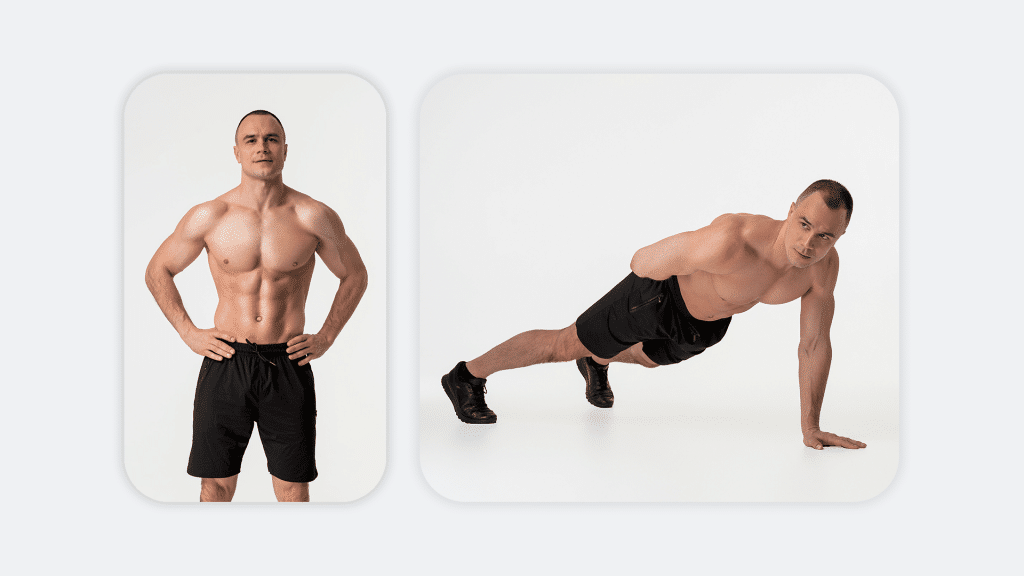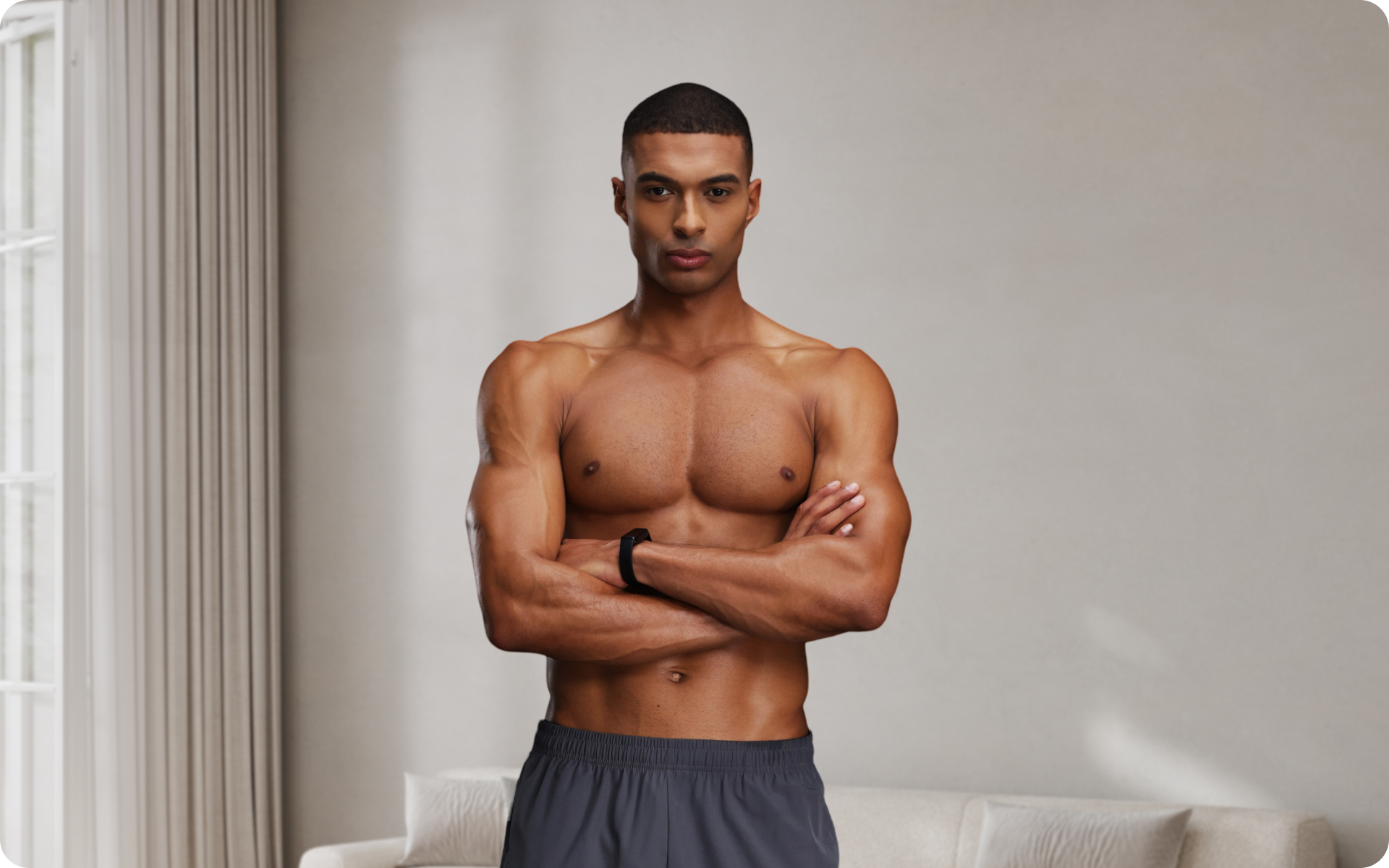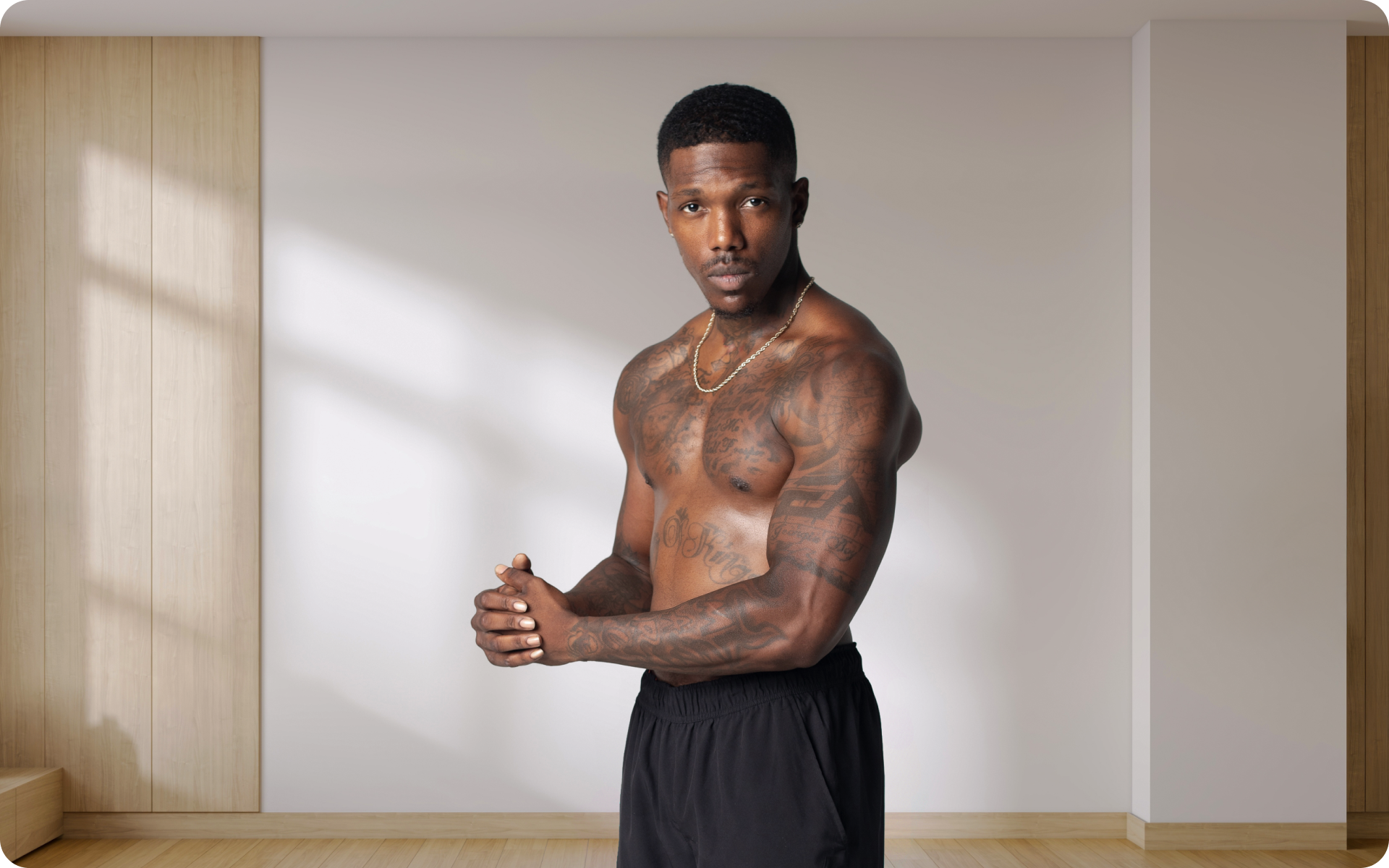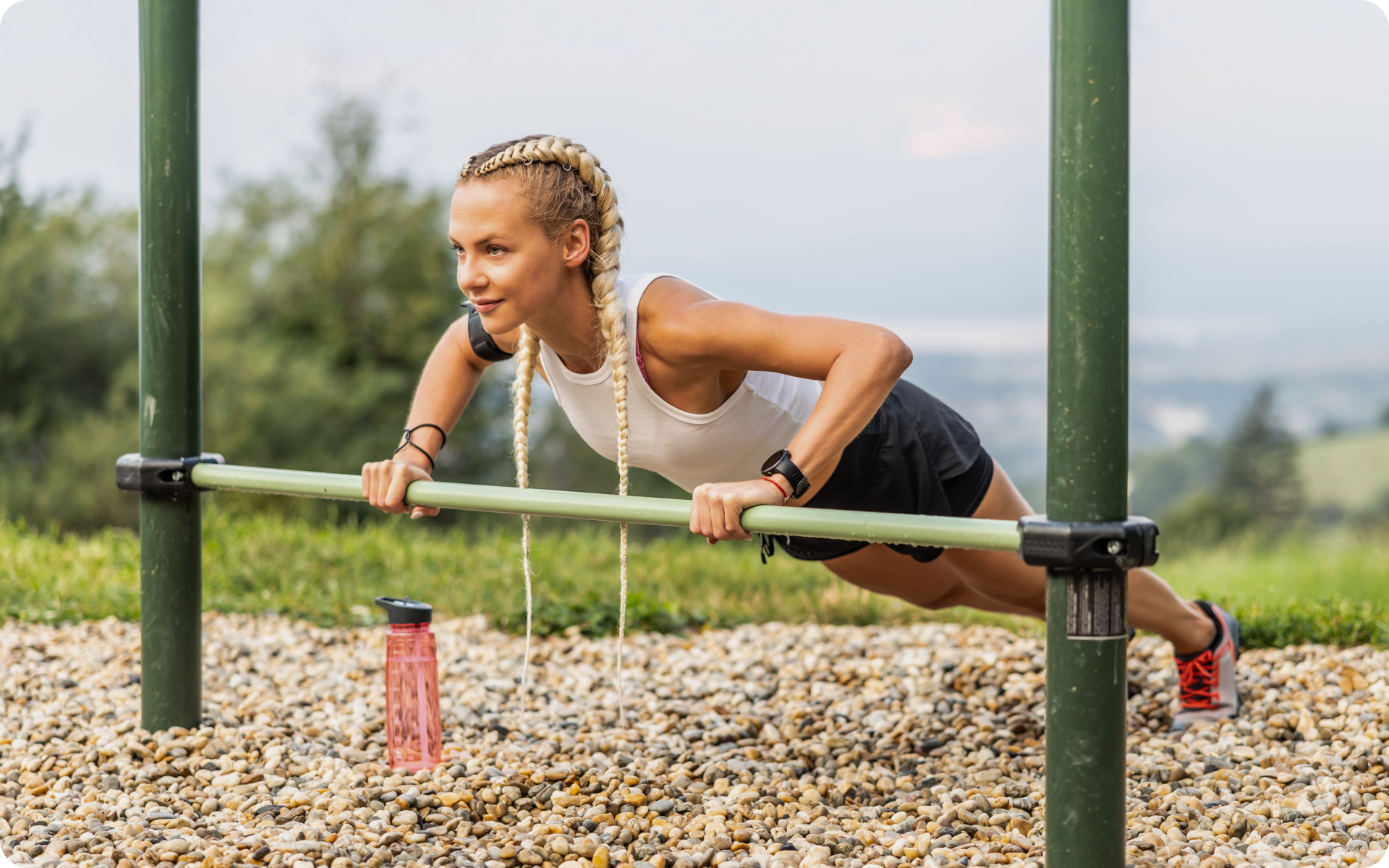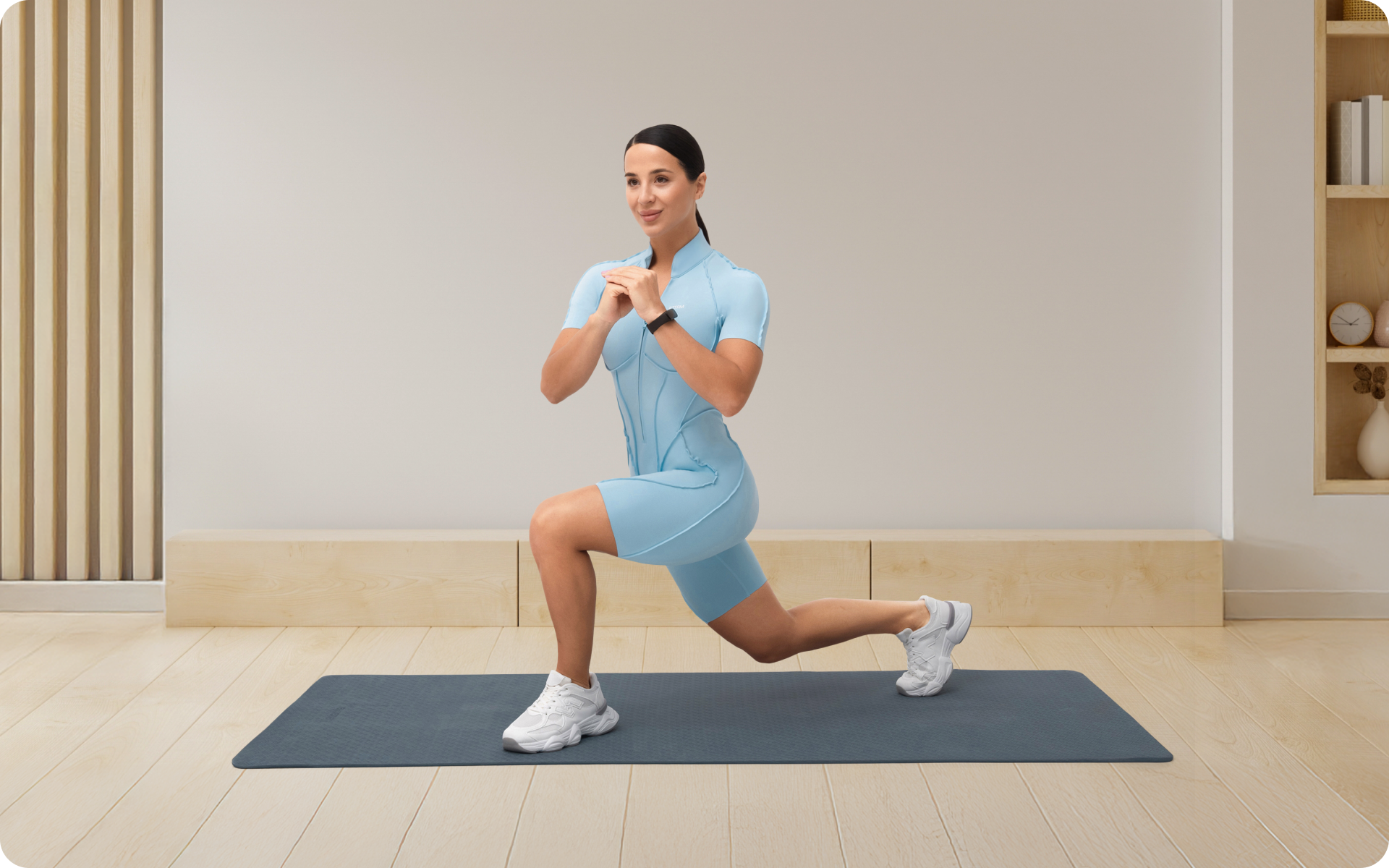Did you know that upper body calisthenics, particularly pull-ups, are a cornerstone of physical fitness? Pull-ups are not just about developing those impressive biceps or a chiseled back. They’re about building functional strength and enhancing overall body control.
This guide to calisthenics pull-ups is designed to help beginners understand the basics and build up their confidence. We’ll go over technique, safety, equipment, tips for success, and variations of pull-ups that you can try out.
By the end of this guide you’ll be well on your way to mastering one of the most effective and challenging exercises in the calisthenics repertoire.
Why Are Pull-Ups So Hard?
Pull-ups are hard for an unlikely reason; at least, for most people. They require you to lift your own body weight. Assuming you are of average size and weight, the forces against you when attempting a pull-up are immense.
This makes them one of the most challenging exercises in calisthenics, but for all the right reasons. Pull-ups are a great way to build strength in your back, arms and chest – not to mention your core muscles which help support your body throughout the entire exercise.
Plus, pull-ups can be done almost anywhere, as long as you have a bar or something else that is capable of supporting your weight.
Your body needs to become accustomed to the challenge of supporting itself in order to get better at pull-ups. Lucky for you; this can happen quickly with the right training and technique.
Intense sweat sessions, working weight loss tips, lip-smacking recipes come in one package with the BetterMe app. And all of it is at your fingertips, start transforming your life now!
Are Pull-Ups Easier If You Weigh Less?
It makes sense in theory – if you weigh less, then it should be easier to perform pull-ups. However, this isn’t necessarily the case.
Think of it this way: a 200-pound person has to lift twice as much weight as a 100-pound person. But if the 200-pound person is stronger, they will be able to do more pull-ups than their lighter counterparts.
Other factors can also overshadow body weight, such as the type of grip used and the technique. Focusing on developing strength first before worrying about your body weight is a brilliant strategy since that strength is what makes pull-ups easier.
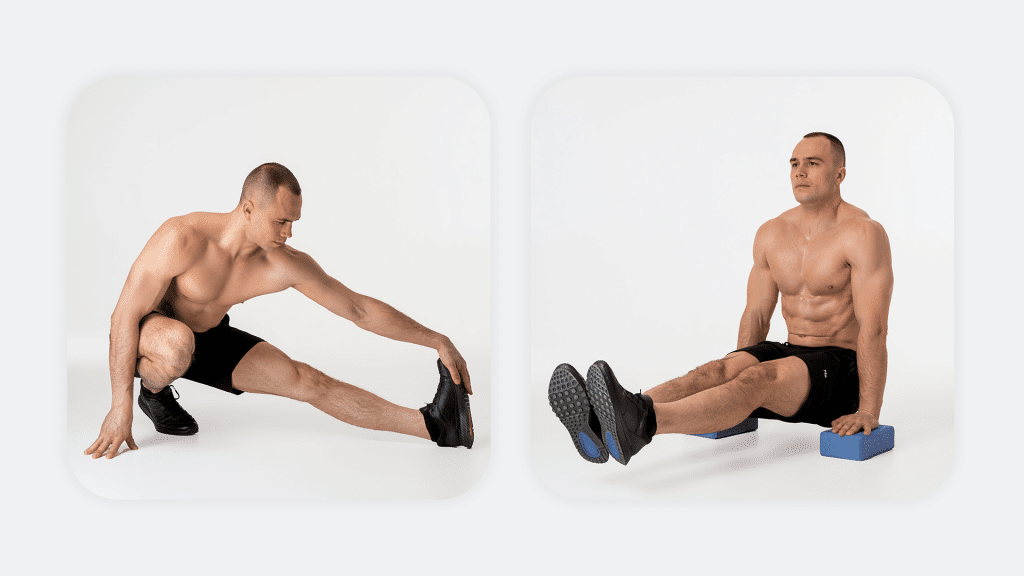
How Can I Be Strong Enough To Do a Pull-Up?
To be strong enough to do a pull-up, you need to build up your back and arm muscles. These muscles are the ones responsible for lifting you up. You also need to strengthen your core and improve your grip strength.
The best way to do this is by doing exercises that target those specific muscle groups. Below is a list of exercises that can help you build strength and prepare for your first pull-up (and how exactly they help):
- Chin-ups (for strengthening the biceps and latissimus dorsi)
- Inverted rows (for strengthening the mid & upper back muscles)
- Deadlifts (for strengthening the hamstrings, glutes, calves, and lower back)
- Push-ups (for building chest strength)
- Planks (for core strength which is crucial for stabilizing your body during pull-ups)
- Rows with resistance bands (for strengthening the upper back and improving grip)
- Negative pull-ups ( the eccentric contraction/lowering phase of the movement -effective for building the strength required for the full movement)
- Bicep curls (for strengthening your arm muscles)
- Lat pull downs (for increasing strength in your lats, which are the main muscles used in a pull-up)
You don’t have to do all of these exercises every day but try to incorporate them regularly into your well-planned workout routine.
Doing these exercises regularly will help you develop the necessary strength and muscle control for performing a pull-up.
Understanding Calisthenics Pull-Up Technique
We could give you a long list of steps for doing pull-ups, but it’s enough to keep in mind just three basic technique points.
- Start with a straight body: Begin each rep in a dead hang position, with your arms and body fully extended. Your back should be flat—this will help you maintain proper form throughout the rep. From there, initiate into an active hang position, by engaging your shoulder blades.
- Pull up without swinging: Keeping your body straight, pull yourself up until your chin is slightly over the bar.
Don’t rely on momentum to help you get your chin over the bar—this will reduce the effectiveness of the exercise and can be dangerous if done incorrectly.
- Lower with control: Slowly lower yourself back to the starting position in a controlled manner. Don’t just drop to the bottom—this can cause undue stress on your joints and muscles.
Visualizing the muscles you’re engaging in during the pull-up can also help you with your form. Focus on pulling with your lats (the muscles in your back), rather than just trying to curl yourself up.
While on the topic of engaging muscles, let’s review anatomy and exactly which muscles pull-ups target.
Read more: Cardio Calisthenics: Why & How To Combine These Two Forms Of Exercise.
Muscles Worked by Pull-Ups
The primary muscles targeted by calisthenics pull-ups are (1):
- Latissimus dorsi (Lats): These large, fan-shaped muscles run along your back and are responsible for the main movement of the exercise.
- Teres major: This back muscle helps to support the lats and adds stability when you’re doing pull-ups.
- Rhomboids: These muscles are located between your shoulder blades and help with scapular retraction (squeezing together of the shoulder blades).
- Posterior deltoids: A large muscle that covers the rear portion of your shoulder.
Pull-ups also engage your biceps, triceps, trapezius and forearm muscles to varying degrees, depending on your form and the specific pull-up variation you’re performing. .
Calisthenics Pull-Up Equipment: What Do You Need?
Your confusion about needing equipment for a calisthenics pull-up workout is not lost on us. After all, the whole point of calisthenics is to use your own body weight as resistance.
But think of calisthenics pull ups as using your own body weight, plus a little extra. You need something to grab onto—whether it’s a pull-up bar or your hands on rings.
A pull-up bar is the most basic piece of equipment you’ll need for calisthenics pull-ups. It can be mounted in a doorway or on an outdoor wall.
Make sure that the bar is strong and steady—you don’t want to be doing pull-ups with the bar wobbling around. If you use a doorway, it needs to be sturdy enough to support your weight.
Rings are another great option for calisthenics pull ups, as they offer a greater range of motion than a traditional pull-up bar. They place less stress on your joints, but require more stability from your core. So if you’re needing calisthenics abs for your pull-ups, rings are a great option.
Common Types of Pull-Up Grips
Calisthenics pull-up variations aren’t just limited to the type of equipment you use. Different grips offer different benefits and target different muscles.
Here are a few common types of pull-up grips that you can experiment with:
- Overhand grip: This is probably the most common grip used for pull-ups, as it allows you to engage your lats more effectively and recruit more back muscles.
- Underhand grip: This grip is also known as a chin up, and puts more emphasis on your biceps. It’s also easier to do than an overhand grip, so it’s great for beginners just starting out with pull-ups.
- Mixed Grip: A combination of the two above grips, this grip allows you to engage different muscles and use less energy than with a traditional overhand or underhand grip.
Your grip width can also affect the muscle groups you’re targeting. A narrow grip will target your biceps more, while a wider grip will hit your lats harder. Experiment with both to find what works best for you.
Structuring Your Calisthenics Pull-Up Workout
Now that you know the different types of grips, let’s talk about how to structure your calisthenics pull-up workout.
Choosing exercises
A beginner can either start with the exercises that build the necessary strength for pull-ups (listed above), or they can jump right into a combination of pull-up variations.
When putting together your calisthenics list of exercises, make sure to focus on form and technique over how many reps you can do.
Reps and sets
Start with just 2-3 sets of 3-5 reps for each variation you’re doing. As you become stronger, increase the number of sets and reps.
Rest days
It’s important to take rest days in between your pull-up workouts to give your muscles time to recover. Some people prefer to work out every other day, while others like to break it up into upper and lower body days. Experiment with different schedules until you find what works best for you.
Dropping pounds by the dozens without putting yourself through the wringer is everyone’s weight loss pipe dream. But what if we told you that the BetterMe app can make that happen? Keep yourself in prime shape with our fat-blasting workouts, delicious budget-sparing recipes, and body-transforming challenges with our app!
Sample Calisthenics Pull-Up Workout
Ready to put everything you’ve learned about calisthenics pull-ups into practice? Here’s a sample workout that you can do to prepare for your first pull-up.
Exercises:
- Dead hangs: 2 sets of 10-20 seconds each
- Negative pull-ups: 3 sets of 5 reps per set
- Scapular retraction exercises (i.e. wall angels): 2 sets of 8-10 reps
- Overhand grip pull ups: 3 sets of 5 reps per set
Remember, you don’t need to rush into it. Start with fewer sets and reps until you build up the strength and confidence to do full pull-ups.
Here’s another sample calisthenics pull-up progression that you can do to increase the intensity of your workout.
Exercises:
- Dead hangs: 2 sets of 30 seconds each
- Negative pull-ups: 3 sets of 8 reps per set
- Assisted pull-ups (with a band): 3 sets of 8 reps per set
- Mixed grip pull-ups (overhand/underhand): 3 sets of 5 reps per set
- Narrow grip pull-ups: 3 sets of 8 reps per set
- Wider grip pull-ups: 3 sets of 8 reps per set
- Single arm rows (using a band, dumbbell or rings): 2 sets of 8-10 reps per side
Performing successful pull-ups requires a series of checks and precautions.
First, make sure the bar is at a height that you can reach. It should be just high enough so your arms can extend completely, but not too high as to risk injury.
Second, use a spotter for safety purposes if necessary. A spotter can help guide and support you in case of fatigue or injury during the pull-up.
Third, make sure the bar is secure and won’t move around when you pull yourself up. If the bar wobbles, it can cause injury or prevent you from completing the movement properly.
Finally, have an effective warm-up routine. We use the word “effective” because you don’t want to waste time doing unnecessary movements. Focus on dynamic stretches and relevant activation exercises that will help prepare your muscles for the workout (2).
Dynamic stretches that go a long way in preparing your body for pull-ups include shoulder rolls, arm circles, and chest stretches. Any stretch that activates your core muscles and arms will be beneficial. Activation exercises can include wall angels, scap pull ups, and inchworms.
How Many Pull-Ups Are Good, By Age?
Age determines a number of things when it comes to pull-ups, such as grip strength, body composition, and even the level of difficulty for certain exercises.
Even so, age isn’t the only predictor of how many pull-ups you can do. Take for example, a 20-year old who has never done pull-ups before and a 30-year old who’s been training for years. The 30-year-old will likely be able to do more pull-ups than the 20-year-old, regardless of age.
With that in mind, there are certain benchmarks that you can aim for by age group. For adults between 25-34 years old, 10-15 pull ups is considered an excellent performance.
For those aged 35-44, 8-10 reps is good. After 45 7-8 reps is still considered a good performance.
Can You Overdo Pullups?
Yes, you can overdo pull-ups. Although they are a great upper body workout, doing too many without proper rest may counts as overtraining and may lead to injury.
How many pull-ups is too many? Well, it depends. For example, if you’re a beginner, doing 1-2 sets of pull-ups with 8-10 reps per set might be enough. On the other hand, an experienced athlete may be able to handle up to 4 sets of 12-15 reps with ease.
How frequently you should do pull-ups also plays a role. Allow your muscles at least 24 hours of rest before doing another set of pull-ups to make sure they are fully recovered and ready for the next workout.
Like any other exercise, it’s all about balance and moderation.
Consider your form. When you do too many pull-ups in one workout, especially when fatigued, your form can suffer. Poor form not only reduces the effectiveness of the exercise, but it can also increases the risk of injury (3).
Furthermore, if you’re always doing pull-ups to the exclusion of other exercises, you’re not really getting the full benefit. Other exercises like triceps extensions, bicep curls, and shoulder presses can help to strengthen your upper body so that you’re not relying on pull-ups alone.
An ideal fitness routine should incorporate various exercises to ensure that all muscle groups are worked evenly. It’s okay if your routine includes pull-ups, but consider including some other accessory exercises such as those mentioned, to compliment the main movements.
Read more: Calisthenics and Weight Training: Should You Do Them Both?
Frequently Asked Questions
Are Pull-ups Good for Calisthenics?
Yes; pull-ups are a key exercise in calisthenics. They work multiple muscle groups at once, including your back, arms, and shoulders. Plus, they’re a fantastic way to build functional strength and improve body control.
How Many Pull-ups Can a Calisthenics Participant Do?
A beginner may do 3-5 pull-ups. Someone who’s experienced in calisthenics can perform 6-10 pull-ups in one set. The actual number of pull-ups a calisthenics participant can perform is influenced by several factors including their level of training, physical condition, and consistency in practice.
How do I Increase My Pull-ups in Calisthenics?
Increasing your pull-up count in calisthenics involves consistent training, proper form, and gradual progression. Start with what you can manage, even if it’s just one pull-up. Work towards adding one more to your count each week or every other week.
Also, consider incorporating other exercises that strengthen the same muscle groups as pull-ups, like rows or lat pulldowns.
Are Pull-ups harder than Push-ups?
Yes; pull-ups tend to be harder than push-ups because they require more strength to lift your entire body weight. They target different muscle groups as well.
While push-ups primarily work your chest, triceps, and shoulders, pull-ups mainly target your back and biceps. Both exercises are excellent for building upper body strength.
Is 50 Pull-ups a Day a Lot?
Yes, 50 pull-ups a day is quite a lot, especially for beginners. Over time, this high volume could potentially lead to overtraining or injury if not balanced with adequate rest and recovery. You’re better off focusing on quality over quantity, ensuring each pull-up is performed with proper form.
Calisthenics vs Bodybuilding: Which one is better?
Both calisthenics and bodybuilding are great exercises for building muscle. Calisthenics rely only on body weight and helps build functional strength, endurance and flexibility. Bodybuilding on the other hand, uses progressive resistance to build muscle.
Your fitness goals determine whether you choose calisthenics or bodybuilding. However, you can choose to do hybrid calisthenics which combines conventional calisthenics with bodybuilding.
The Bottom Line
Calisthenics pull ups are a great way to strengthen your upper body and core muscles, as long as you don’t overdo it. Start slow with fewer reps and sets until you’re comfortable enough to progress further. Also make sure to use proper technique, rest in between workouts, and incorporate other exercises into your routine for full-body fitness.
DISCLAIMER:
This article is intended for general informational purposes only and does not serve to address individual circumstances. It is not a substitute for professional advice or help and should not be relied on for making any kind of decision-making. Any action taken as a direct or indirect result of the information in this article is entirely at your own risk and is your sole responsibility.
BetterMe, its content staff, and its medical advisors accept no responsibility for inaccuracies, errors, misstatements, inconsistencies, or omissions and specifically disclaim any liability, loss or risk, personal, professional or otherwise, which may be incurred as a consequence, directly or indirectly, of the use and/or application of any content.
You should always seek the advice of your physician or other qualified health provider with any questions you may have regarding a medical condition or your specific situation. Never disregard professional medical advice or delay seeking it because of BetterMe content. If you suspect or think you may have a medical emergency, call your doctor.
SOURCES:
- A Comparison of Muscle Activation during the Pull-up and Three Alternative Pulling Exercises (2018, researchgate.net)
- CURRENT CONCEPTS IN MUSCLE STRETCHING FOR EXERCISE AND REHABILITATION (2012, ncbi.nlm.nih.gov)
- Strength training: Get stronger, leaner, healthier (2023, mayoclinic.org)



